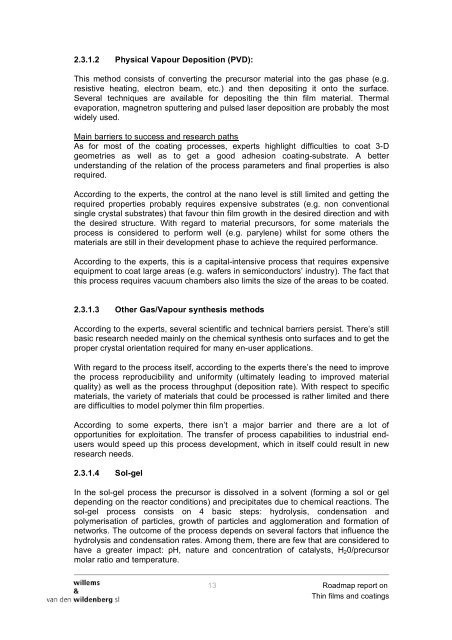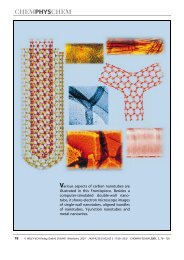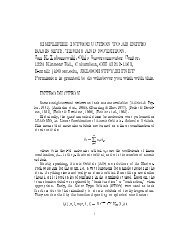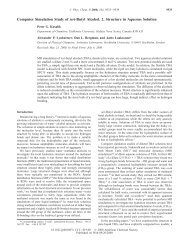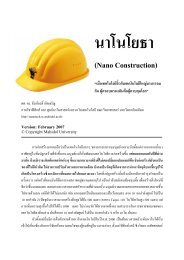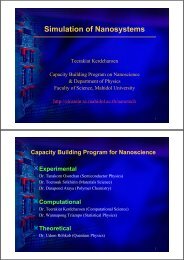'Thin films & coatings' Roadmap - Nano Mahidol
'Thin films & coatings' Roadmap - Nano Mahidol
'Thin films & coatings' Roadmap - Nano Mahidol
You also want an ePaper? Increase the reach of your titles
YUMPU automatically turns print PDFs into web optimized ePapers that Google loves.
2.3.1.2 Physical Vapour Deposition (PVD):<br />
This method consists of converting the precursor material into the gas phase (e.g.<br />
resistive heating, electron beam, etc.) and then depositing it onto the surface.<br />
Several techniques are available for depositing the thin film material. Thermal<br />
evaporation, magnetron sputtering and pulsed laser deposition are probably the most<br />
widely used.<br />
Main barriers to success and research paths<br />
As for most of the coating processes, experts highlight difficulties to coat 3-D<br />
geometries as well as to get a good adhesion coating-substrate. A better<br />
understanding of the relation of the process parameters and final properties is also<br />
required.<br />
According to the experts, the control at the nano level is still limited and getting the<br />
required properties probably requires expensive substrates (e.g. non conventional<br />
single crystal substrates) that favour thin film growth in the desired direction and with<br />
the desired structure. With regard to material precursors, for some materials the<br />
process is considered to perform well (e.g. parylene) whilst for some others the<br />
materials are still in their development phase to achieve the required performance.<br />
According to the experts, this is a capital-intensive process that requires expensive<br />
equipment to coat large areas (e.g. wafers in semiconductors’ industry). The fact that<br />
this process requires vacuum chambers also limits the size of the areas to be coated.<br />
2.3.1.3 Other Gas/Vapour synthesis methods<br />
According to the experts, several scientific and technical barriers persist. There’s still<br />
basic research needed mainly on the chemical synthesis onto surfaces and to get the<br />
proper crystal orientation required for many en-user applications.<br />
With regard to the process itself, according to the experts there’s the need to improve<br />
the process reproducibility and uniformity (ultimately leading to improved material<br />
quality) as well as the process throughput (deposition rate). With respect to specific<br />
materials, the variety of materials that could be processed is rather limited and there<br />
are difficulties to model polymer thin film properties.<br />
According to some experts, there isn’t a major barrier and there are a lot of<br />
opportunities for exploitation. The transfer of process capabilities to industrial endusers<br />
would speed up this process development, which in itself could result in new<br />
research needs.<br />
2.3.1.4 Sol-gel<br />
In the sol-gel process the precursor is dissolved in a solvent (forming a sol or gel<br />
depending on the reactor conditions) and precipitates due to chemical reactions. The<br />
sol-gel process consists on 4 basic steps: hydrolysis, condensation and<br />
polymerisation of particles, growth of particles and agglomeration and formation of<br />
networks. The outcome of the process depends on several factors that influence the<br />
hydrolysis and condensation rates. Among them, there are few that are considered to<br />
have a greater impact: pH, nature and concentration of catalysts, H 2 0/precursor<br />
molar ratio and temperature.<br />
13 <strong>Roadmap</strong> report on<br />
Thin <strong>films</strong> and coatings


